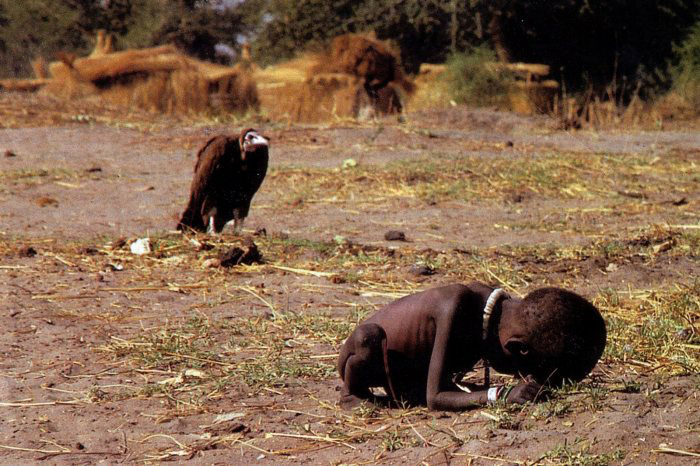Ethics in Photography Abroad
During a lecture on the Ethics of Photography, that Dr. Paul Hester gave to the Loewenstern Fellows, I was reminded of the story of Kevin Carter. Carter was a South African photojournalist won the 1993 Pulitzer Prize for capturing a picture of a starving Sudanese child trying to reach the feeding center while a hungry vulture was waiting nearby.
 This photograph is very controversial. Some critics claim that Carter had a moral obligation to help the child. Others claimed that the picture is a lie of omission. While the toddler seems abandoned in the picture, in reality, a photojournalist who accompanied Carter claim that the parents briefly left the child to get food from a UN plane. This picture reminds me that a camera is essentially a lens for the photographer's eye.
This photograph is very controversial. Some critics claim that Carter had a moral obligation to help the child. Others claimed that the picture is a lie of omission. While the toddler seems abandoned in the picture, in reality, a photojournalist who accompanied Carter claim that the parents briefly left the child to get food from a UN plane. This picture reminds me that a camera is essentially a lens for the photographer's eye.
Taking a picture imposes one's biases onto the roll of film because those same biases color one's vision of reality. Just like added bolded words and italics influences the meaning of the preceding sentence, the choice of lighting, composition, and color influence the reaction that a photograph elicits. Furthermore, the biases of my audience influences how they interpret the photograph. I think the key in taking ethical photographs is clearly identifying possible biases and trying not to inject my own into the picture.
It is especially important that I take ethical photographs in Jinja because they are the first look into the city, district, and country for many of the viewers. It is hypocritical and wrong to exploit people's stories for the sake of a photograph, especially if I am only in the country to complete a project for them.
So, how do I take ethical photographs?
I asked Dr. Hester this same question. First, he emphasized that it is important to ask the permission of everyone in the photograph. Information about them is released to the public, so it is critical that everyone has consented to that.
Additionally, I should take pictures in a way that maintains the dignity of everyone involved. Kevin Carter's picture diminishes the dignity of the parents because it omits them from the frame, implying that they abandoned this child. Pictures of starving African children flood the booklets and websites of NGO's. While poverty is a somber reality, these pictures don't showcase the remarkable resiliency of the communities depicted. They don't showcase the success stories. To accomplish this, it is very useful to ask how the subjects in the photograph want to be depicted.
It is also useful to build a relationship with the subjects, if people are being photograph. If the subject of the photograph is an object or location, it is important to learn more about the context and history. These will help bring my perspective closer to the truth, however you define it. In the same vein, photographs should be faithfully edited as to not distort the image from reality.
All in all, I'm very excited to document my trip abroad. The lecture on the ethics of photography gave me some tools to do so in a responsible way.